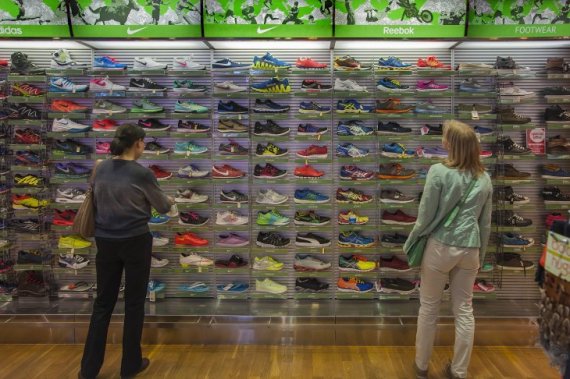
Ahead of the ISPO Digitize Summit, ISPO.com wanted to look into what was on retailers’ minds. Part 1 of our retailer interviews was about the key challenges from digitalization. Part 2 addresses the difficult relationship with manufacturers, and in part 3, retailers reveal how digital they think the supply chain really is.
Never out of stock (NOS) – in theory, the principle sounds great for customers and retailers. In practice, however, there are still some major problems with the constant availability of every desired item.
“Intersport has done good work in recent years, and constantly propelled topics like NOS and order portals. But even here, there’s still a lot of room for improvements, especially in delivery capability. That’s the big disadvantage of NOS. It all works wonderfully as long as the ability to deliver is guaranteed – in the event of delivery bottlenecks it often becomes a problem, because you rely too much on the automations in the background,” says Marcel Altenfelder, Managing Director of the Intersport store in Dörfles-Esbach, Germany.
As already described in part 2 of our ISPO survey, there’s a wrench in the works for cooperation between manufacturers and retailers. “Due to the strong seasonal business and binding launch dates, the supply situation from the manufacturers is sometimes difficult. Hard international marketing timelines then lead to problems,” reveals Carsten Schmitz, Chief Digital Officer of Intersport Germany.
Joachim Kiegele, owner of the store in Geisenheim, Germany, goes even further: “Today, the supply chain is still highly analog in many areas, and is dominated by shortage management. We’re still spending too much time on this problem instead of rethinking the process of outfitting people with goods. Unfortunately!”
Although the digitalization of the supply chain in the sports industry is also being driven forward by the “big players,” the speed of implementation varies greatly at the various points in the process chain. Many more traditional retailers are still reluctant to engage in the new processes, while others are having problems with their implementation.
Digitalization offers great opportunities here, as Nicole Kälber, owner & managing director of an Intersport store in Pforzheim, finds: “There’s no more paper like electronic orders, delivery notes, or invoices. Electronic price tags save costs, the goods can be sold faster, and can be changed in price.”
ISPO Digitize at the ISPO Munich 2018 in pictures
At Sport 2000, the Order to Cash (OTC) process chain – i.e. from order to receipt of payment – is largely already completely digital, at least with regard to the core processes such as article creation, order, confirmation, shipping notification, and invoice.
Managing director Andreas Rudolf points to the high degree of reliability and the increase in efficiency resulting from digitalization. This reduces costs: “But the path there is paved with high expenses and investments in machines and people that should not be underestimated. Many standards applied in these areas allow a great deal of room for interpretation, which means that there is still a great need for coordination between the participants. This is often underestimated or misjudged.” What’s important is making the sub-processes as lean and efficient as possible.
Rudolf therefore has one key recommendation: “Digitalization means, first of all, dealing with the processes.” The perfect platform for discussing the design of the digital supply chain is offered by the ISPO Digitize Summit. There, both big and small players in the sports industry will meet at the International Congress Center ICM in Munich on June 28/29.
One exciting tool to check how much progress a company has already made in digitalization is the Digital Readiness Check. Professor Karl Peter Fischer developed the free online tool together with ISPO, and sees a lot of catching up to do in the industry.
The great ISPO.com retailer survey on digitalization:
Part 1: The Challenges in Sports Retail
Part 2: When Brands and Sports Retailers Become Competitors
Part 3: Digitalization of the Supply Chain: The Digital Dream of the End of Supply Bottlenecks+
Part 4: Digitalization Is Revolutionizing Sports Retailer Marketing
 SportsTechUnlocking the Future of Sports with AI
SportsTechUnlocking the Future of Sports with AI
- ISPO awards
- Mountain sports
- Bike
- Design
- Retail
- Fitness
- Health
- ISPO Job Market
- ISPO Munich
- ISPO Shanghai
- Running
- Brands
- Sustainability
- Olympia
- OutDoor
- Promotion
- Sports Business
- ISPO Textrends
- Triathlon
- Water sports
- Winter sports
- eSports
- SportsTech
- OutDoor by ISPO
- Heroes
- Transformation
- Sport Fashion
- Urban Culture
- Challenges of a CEO
- Trade fairs
- Sports
- Find the Balance
- Product reviews
- Newsletter Exclusive Area
- Magazine



















